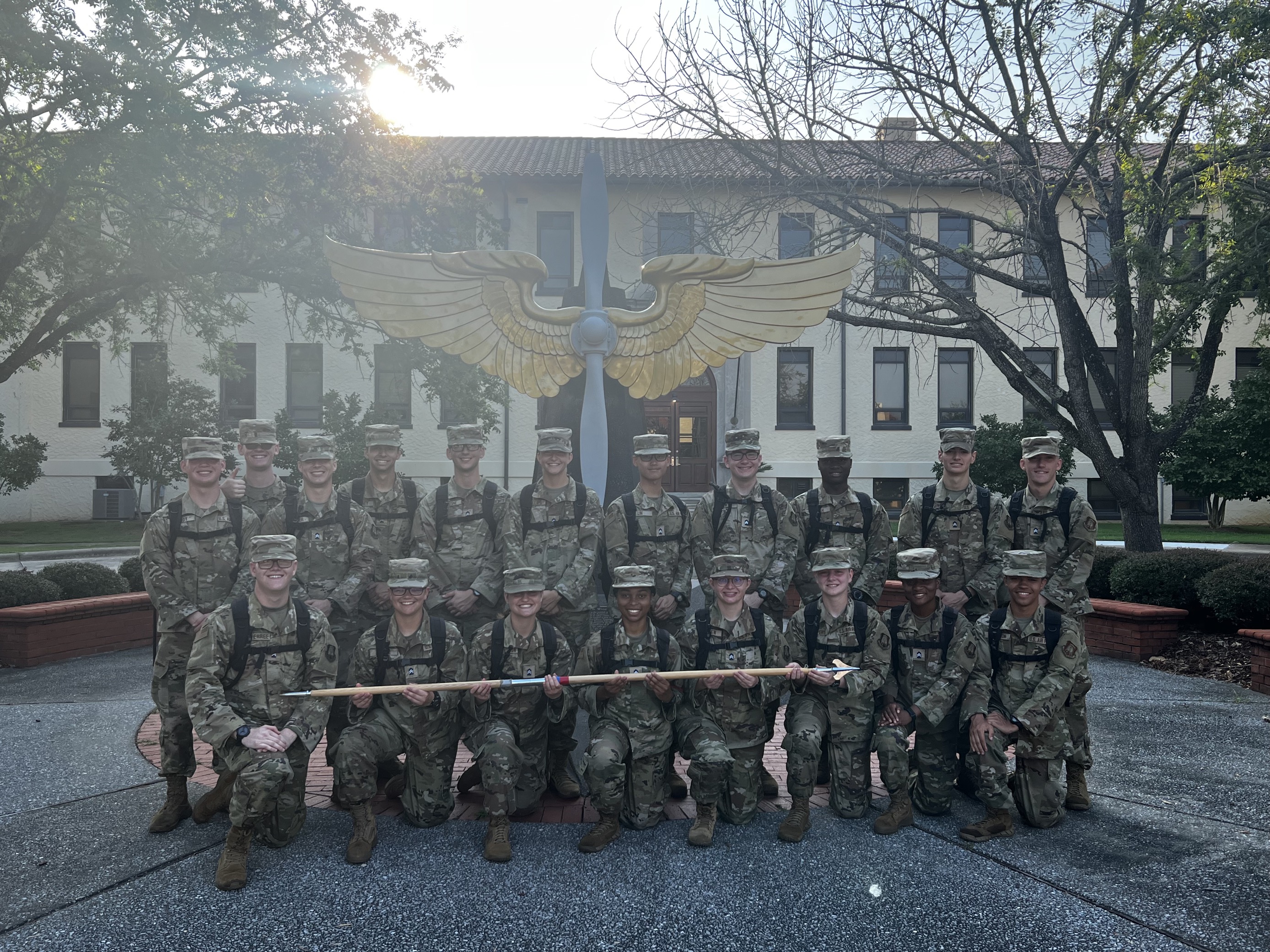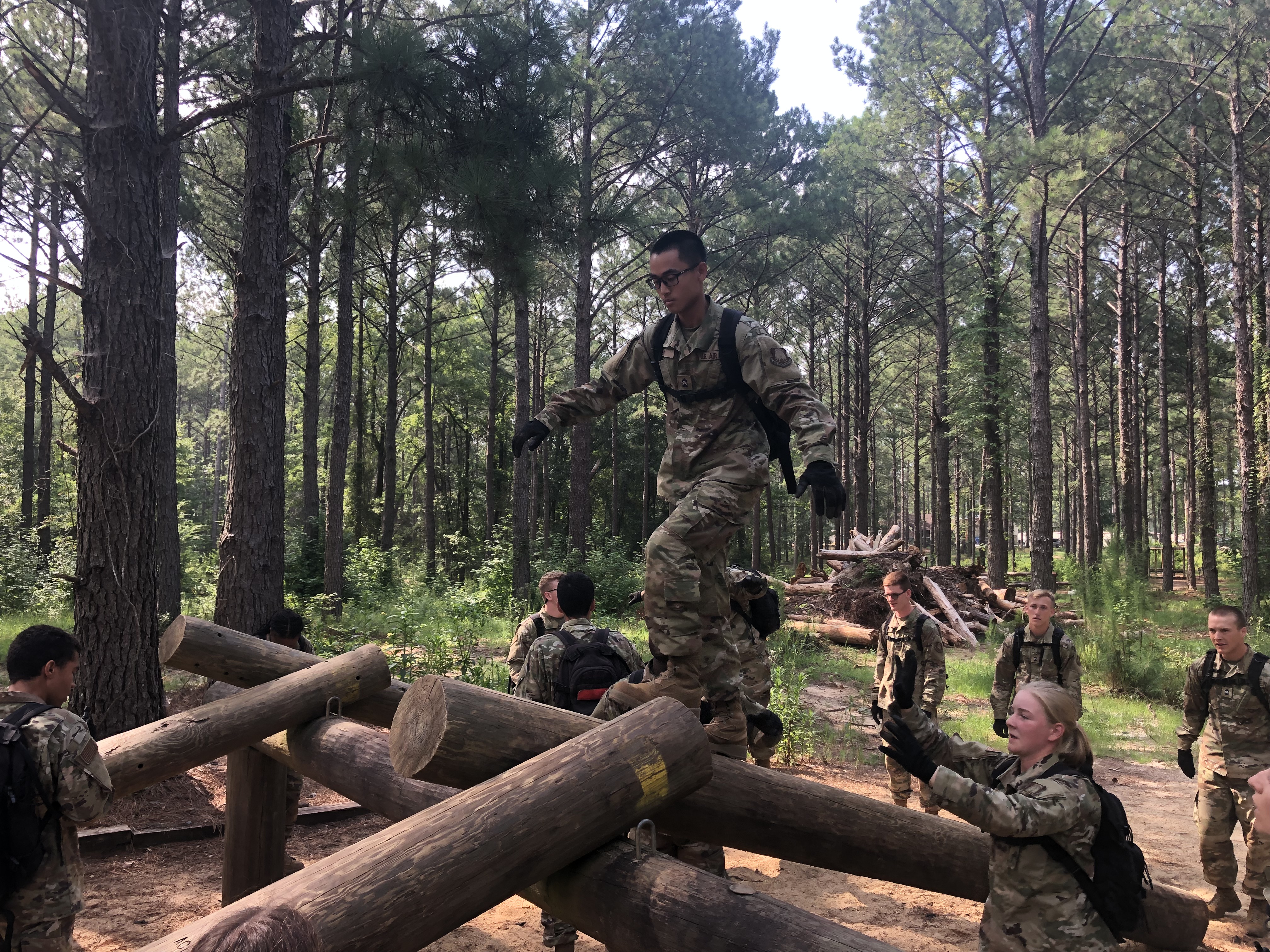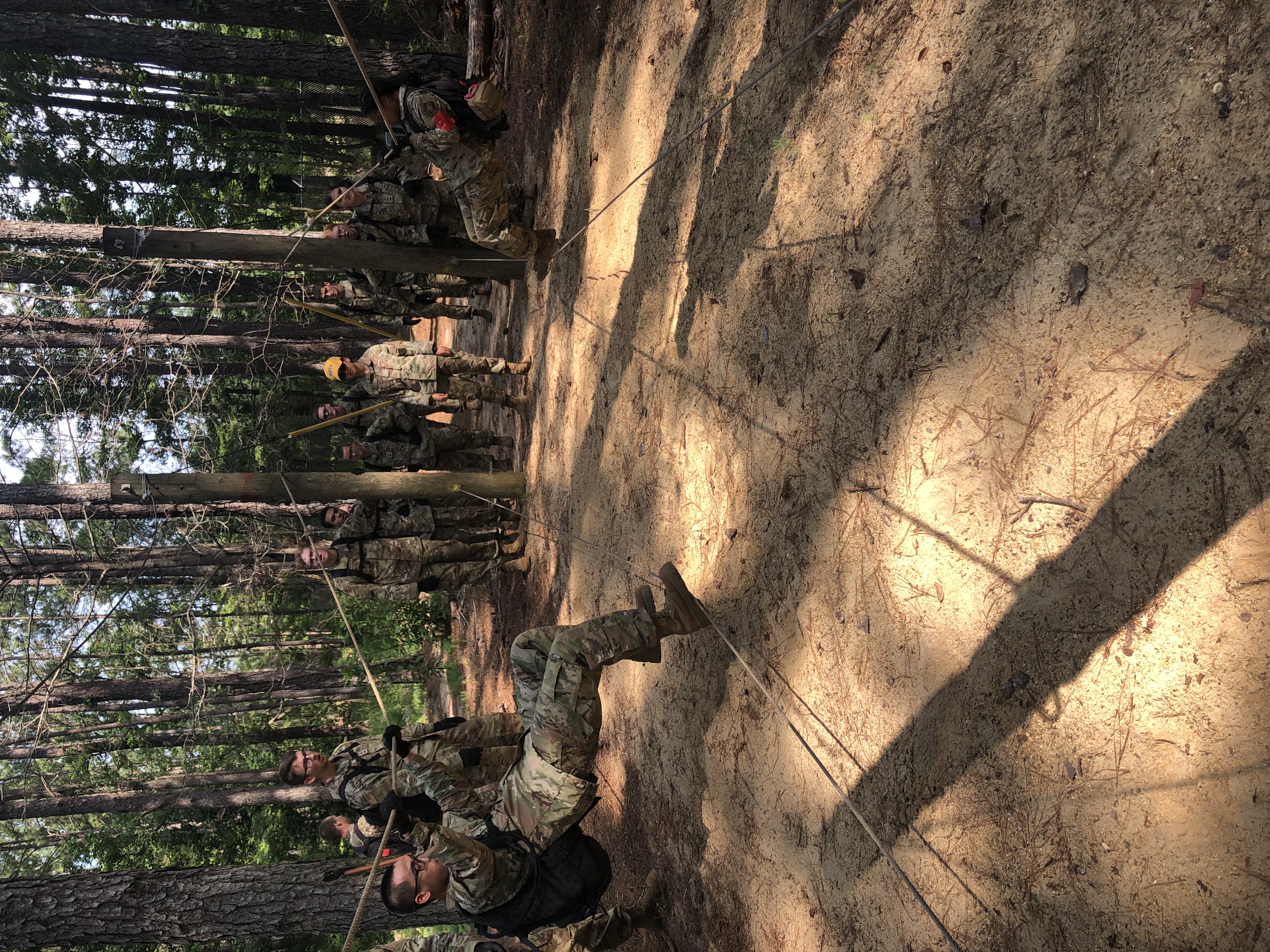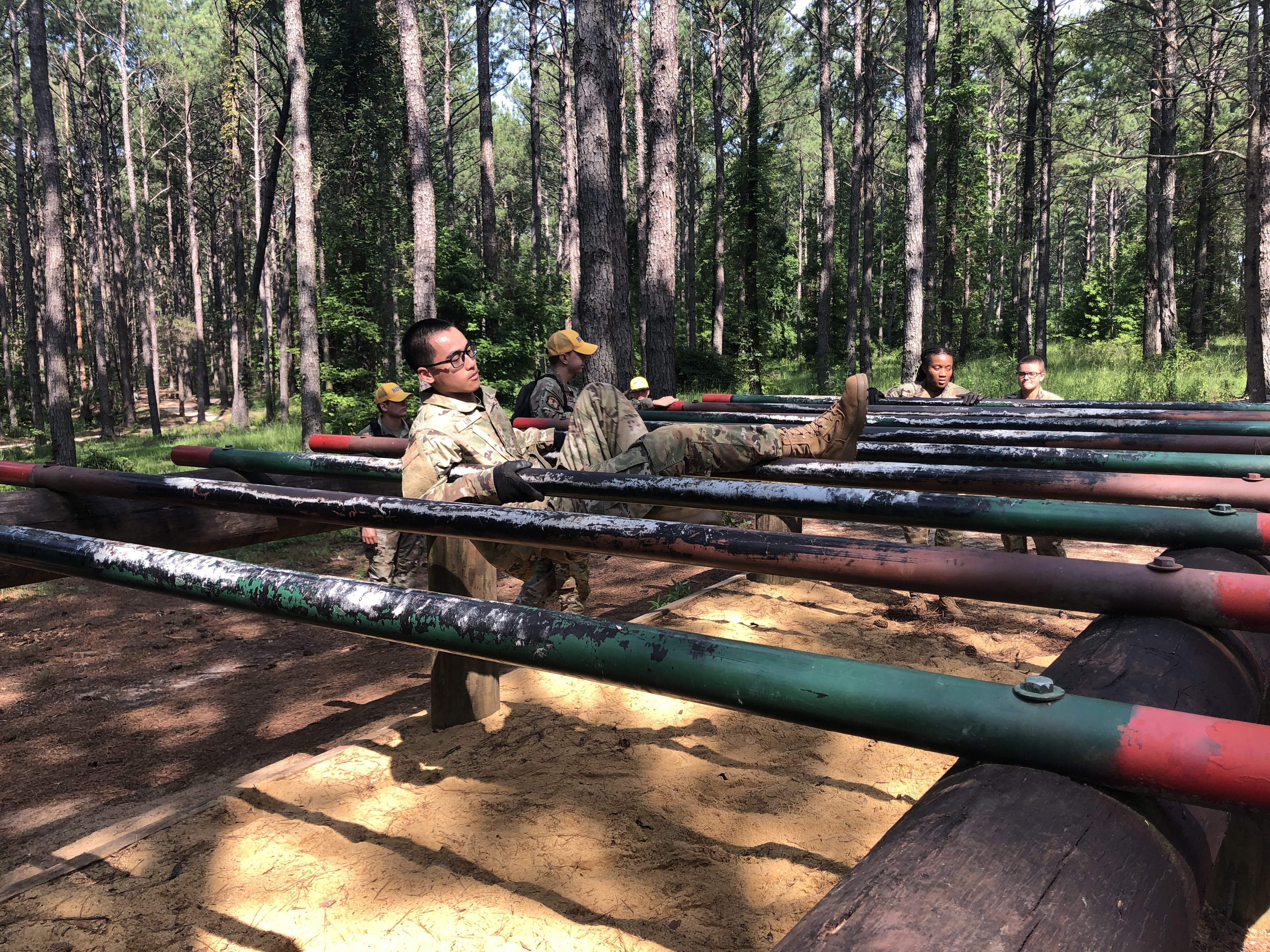Field Training
Overview
Field Training (FT) is an integral component of the Air Force Reserve Officer Training Corps (AFROTC) curriculum. Cadets attend a two-week encampment at Maxwell AFB, Alabama over the summer typically between their Sophomore and Junior year. Cadets are evaluated and expected to perform well on a wide range of competencies which include: communication skills, wingman culture, team building, critical thinking, adaptability and decision-making. Each training days begins at 0400 and ends at 2000.
FT is a required component for General Military Course (GMC) cadets to advance into the Professional Officer Course (POC) in their Junior and Senior year, and to eventually commission into the United States Air Force or Space Force. Cadets will earn their ‘Prop and Wings’, an insignia denoting their leadership abilities and a sense of responsibilities that accompanies it.
I attended FT over the summer of 2023, MAX 5, from July 14 to July 31, ranked in the top fifth out of half a thousand cadets in the encampment, and earned my Prop and Wings. I was evaluated on the following competencies:
- Initial Knowledge Assessment
- Drill Evaluation
- Health Assessment
- Active Learning
- Leadership
- Flight Training Officer (FTO) Evaluation
- Peer Ranking
Memorandum
The following is a two-page reflection on my FT experience:
MEMORANDUM FOR RECORD
SUBJECT: Field Training Reflection
1. The purpose of this memorandum is to reflect on leadership lessons learned and goals
achieved at Field Training.
2. My expectations of Field Training was that it would be a reflection of the training I have been
receiving at the detachment with a heightened intensity due to the amount of trainers present that
creates pressure and the severity of the weather diminishing the performance of cadets. While
the weather exceeded my expectations in its intensity, I find the performance of my peers at
times not on par with the standards set forth by our detachment, predominantly in the areas of
drill and procedural-related competencies and their effectiveness. The time-compressed
activities met my expectations, being challenging to navigate through Field Training, but
fortunately became a habit and was made more manageable through time utilization and prior
preparation throughout the days.
3. My development as a leader at Field Training came at various times when there were
opportunities to step up. The first was on Training Day three (TD-3), in which the night prior I
was selected to be the Cadet Flight Commander for the following day. Upon notice, I quickly
recalled from the past two TDs of the strengths displayed by my fellow flight mates and assigned
them in positions that they would perform well in. At the time, this was one of my priorities as
for the past two TDs our performance as a flight were severely lacking and morale was
diminishing. I intended to incite a positive influence in our flight through leading as the Cadet
Flight Commander, and was successful in doing so, being met with more flight proposals that
anticipated that day as a sign of good morale and team cohesion, and positive feedback on my
performance as the Cadet Flight Commander after the fact. In addition to recognizing the
strength of others, I also learned to rely on my wingmen in delegating tasks down to my Deputy
Flight Commander whom they would further delegate suspenses as needed. Other opportunities
came up during a drill session to teach counter march to cadets and the playing of King Fish Ace;
in both, I recognized the knowledge I possessed or insights I have acquired and the value they
could bring to my peers, stepped up to share my knowledge, mentored others, and raised our
standards and performances through my initiations. Another area of development was my
sincere desire to help others grow. I learned to always be open-minded about the proficiencies of
others in their performances and did whatever necessary to help elevate their standards. I truly
made “Service Before Self” a core of who I am as a leader.
4. I accomplished my Field Training goals through my relentlessness in performing duties and
mentoring others to raise the standards. At every opportunity that presented itself, to include the
aforementioned ones, I proceeded with the mindset of it being a duty for me to seize it, building
the courage to speak up and to share my knowledge. Through my performance, I was able to
rank in the top thirds of my encampment and be a key player in forming our flight’s identity and
satisfactory performance, drill in particular, denoted on multiple occasions by fellow Flight
Training Staff.
5. I learned at Field Training that leadership is about inciting changes for the better, a means to
achieve objective(s) that come in various forms, and utilizing the strengths and minimizing the
weaknesses of your peers to do so. Quoted by my Cadet Training Assistant, “you can do the
right thing; you might do the wrong thing; but you will never do nothing.” Leaders are the
decision makers that need to build up an inherent sense of such courage to make decisions.
6. I learned in Field Training that I tend to always observe and orient myself in the situations
presented to its full potential prior to making a judgment and/or decision. This is both a strength
and weakness of mine as at times it may lead to me hesitating to step up and make a decision, but
nonetheless when I do step up, I do so with full force to relentlessly execute my decisions. With
my execution, I need to be mindful of my position and not overtake or undermine those in
authority, as well as finding ways to make them shine. I also learned that I need to be mindful of
my articulation, especially when projecting, as due to my natural tongue, at times if I am not
cautious with my words, I may obfuscate my pronunciations of words, thus it is imperative that
when I sound off, I am intentful with each word I am projecting. Lastly, I learned to be myself
both at Field Training and as an advice to myself for the future. Being myself tends to be when I
interact with others the best, when I can perform the best, and when I can share my knowledge
the best with others; it is when I truly am a leader.
Pictures
The following is a few pictures of me during my time at FT (Flight photo; Assault Course photos):




